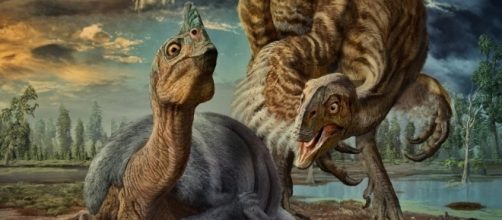Over two decades ago, dinosaur fossils were discovered in Henan province, China. They were estimated to be around 90 million years old, but archaeologists were unsure if they belonged to an already known species of dinosaur or a new species. Now, the remains have finally been identified as a new dinosaur species by a multi-national team of researchers in the scientific journal Nature Communications.
What is this new dinosaur species?
This new dinosaur species is named Beibeilong sinesis, which literally means "baby dragon from china." The species is an oviraptorosaur that lived around 90 million years ago, and it was a giant bird-like dinosaur.
Beibeilong sinesis was closely related to modern birds and likely had a beak, feathers and wings. It is now the largest known animal to have sat on its nest and cared for its offspring.
Adults of this species are estimated to have been over 26 feet (8 meters) tall when standing up, while weighing almost 3 tons (2,721 kilograms). Its nest was ring-shaped and is believed to have been a gigantic 6.56-9.84 feet (2-3 meters) in diameter. These nests would protect a clutch of more than twenty-four eggs. Each egg was up to 1.47 feet (45 centimeters) in length and weighed about 11 pounds (5 kilograms).
What exactly do the fossils consist of?
The fossils consist of large dinosaur eggs and an embryo. They were found in a nest site of the species.
The embryo is believed to have died while hatching out of its egg. It was this fossilization of the embryo on top of the egg that helped researchers conclude how the species cared for its young. From this they realized that this dinosaur species sat on its nest to incubate its eggs.
Over two decades with these unknown fossils
The dinosaur fossils were found in China by farmers back in 1993. However, they were sold to a company in the United States shortly after they were discovered. The remains of the fossilized embryo was actually featured on the May 1996 National Geographic cover and was nicknamed "Baby Louie."
Eventually, the fossils would return to China after over 20 years. It was after this that a multi-national team of Chinese, Canadian and Czech researchers realized that it was a new species. Everything that is known about the species comes from these fossils, as adult bones have yet to be discovered. Beibeliong sinesis' fossils are now permanently stored in the Henan Geological Museum.


